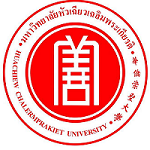กรุณาใช้ตัวระบุนี้เพื่ออ้างอิงหรือเชื่อมต่อรายการนี้:
https://has.hcu.ac.th/jspui/handle/123456789/3142| ชื่อเรื่อง: | Modelling and analyzing spatial clusters of leptospirosis based on satellite-generated measurements of environmental factors in Thailand during 2013-2015 |
| ผู้แต่ง/ผู้ร่วมงาน: | Amornrat Luenam Nattapong Puttanapong Huachiew Chalermprakiet University. Faculty of Public and Environmental Health Thammasat University. Faculty of Economics |
| คำสำคัญ: | Leptospirosis -- Thailand เลปโตสไปโรซิส -- ไทย Remote sensing การวิเคราะห์ข้อมูลระยะไกล Spatial analysis (Statistics) การวิเคราะห์เชิงพื้นที่ (สถิติ) Geographic information systems ระบบสารสนเทศทางภูมิศาสตร์ |
| วันที่เผยแพร่: | 2020 |
| แหล่งอ้างอิง: | Geospatial Health 15, 2 (2020) |
| บทคัดย่อ: | This study statistically identified the association of remotely sensed environmental factors, such as Land Surface Temperature (LST), Night Time Light (NTL), rainfall, the Normalised Difference Vegetation Index (NDVI) and elevation with the incidence of leptospirosis in Thailand based on the nationwide 7,495 confirmed cases reported during 2013-2015. This work also established prediction models based on empirical findings. Panel regression models with random-effect and fixed-effect specifications were used to investigate the association between the remotely sensed environmental factors and the leptospirosis incidence. The Local Indicators of Spatial Association (LISA) statistics were also applied to detect the spatial patterns of leptospirosis and similar results were found (the R2 values of the random-effect and fixed-effect models were 0.3686 and 0.3684, respectively). The outcome thus indicates that remotely sensed environmental factors possess statistically significant contribution in predicting this disease. The highest association in 3 years was observed in LST (random- effect coefficient = -9.787, P<0.001; fixed-effect coefficient = -10.340, P=0.005) followed by rainfall (random-effect coefficient = 1.353, P<0.001; fixed-effect coefficient = 1.347, P<0.001) and NTL density (random-effect coefficient = -0.569, P=0.004; fixed-effect coefficient = -0.564, P=0.001). All results obtained from the bivariate LISA statistics indicated the localised associations between remotely sensed environmental factors and the incidence of leptospirosis. Particularly, LISA's results showed that the border provinces in the northeast, the northern and the southern regions displayed clusters of high leptospirosis incidence. All obtained outcomes thus show that remotely sensed environmental factors can be applied to panel regression models for incidence prediction, and these indicators can also identify the spatial concentration of leptospirosis in Thailand. |
| รายละเอียด: | สามารถเข้าถึงบทความฉบับเต็ม (Full text) ได้ที่ : https://www.geospatialhealth.net/index.php/gh/article/view/856 |
| URI: | https://has.hcu.ac.th/jspui/handle/123456789/3142 |
| ปรากฏในกลุ่มข้อมูล: | Public and Environmental Health - Articles Journals |
แฟ้มในรายการข้อมูลนี้:
| แฟ้ม | รายละเอียด | ขนาด | รูปแบบ | |
|---|---|---|---|---|
| Modelling-and-analyzing-spatial-clusters-of-leptospirosis.pdf | 62.73 kB | Adobe PDF | ดู/เปิด |
รายการทั้งหมดในระบบคิดีได้รับการคุ้มครองลิขสิทธิ์ มีการสงวนสิทธิ์เว้นแต่ที่ระบุไว้เป็นอื่น
